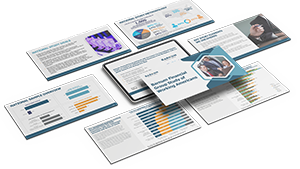
When it comes to securing their retirement planning, entrepreneurs face a distinct challenge. Their fluctuating business income, coupled with the inherent uncertainties of a dynamic business plan, creates a unique landscape compared to traditional employment. This landscape produces a crucial need for entrepreneurs to be proactive and avoid financial vulnerability later in life.
Understanding the Entrepreneurship Landscape
Entrepreneurship spans diverse realms, each presenting unique financial challenges:
- Solopreneurs manage solo ventures. While their income can be steady, it may also fluctuate and often scales differently than a growing enterprise, requiring adaptable savings strategies.
- Startup Founders navigate significant volatility tied to growth cycles, fundraising rounds, and the inherent risks of innovation.
- Angel Investors wield financial influence with the potential for high rewards, but also high risks, tied to the success of their portfolio companies.
Unlike traditional employees with steady paychecks, entrepreneurs often face income fluctuations, which complicate conventional retirement planning. This challenge is intensified by missed compounding opportunities, the absence of employer-sponsored matching contributions, and the temptation to reinvest all profits back into the business.
Key Retirement Strategies for Entrepreneurs
Start Early and Save Consistently
Prioritizing early and consistently saving can help you leverage the powerful effect of compound interest. Even small, consistent contributions can grow into substantial nest eggs over time. To manage fluctuating income, adaptable strategies are key.
Set realistic retirement goals and automate contributions for disciplined progress. Begin with a comfortable contribution amount, then gradually increase it annually as your business grows. Choose accounts that offer flexibility in contribution adjustments or rollovers to adapt to fluctuating income patterns. Regularly review your goals and contribution amounts to match your life changes and financial fluctuations.
Leverage Tax-Advantaged Options for 2025
Navigate the unique entrepreneurial financial landscape by exploring tax-advantaged retirement accounts specifically designed for your needs. Options like SEP IRAs and Solo 401(k)s offer attractive tax benefits to maximize future financial security.
- SEP IRAs (Simplified Employee Pension IRAs): These plans are relatively simple to set up and allow you to make tax-deductible contributions for yourself and any eligible employees. For 2025, you can generally contribute the lesser of 25% of your compensation (up to an annual compensation limit of $350,000) or $70,000. These contributions are made solely by the employer.
- Solo 401(k)s (Individual 401(k)s / Uni-Ks): Designed for self-employed individuals with no full-time employees other than a spouse, Solo 401(k) plans provide greater contribution flexibility and investment options. For 2025, you can contribute in two capacities:
- As an employee (salary deferral): Up to $23,500. If you are age 50 or older, you can contribute an additional catch-up contribution of $7,500 (totaling $31,000). For those aged 60-63, this catch-up amount is even higher at $11,250 (totaling $34,750), a provision enhanced by the SECURE 2.0 Act.
- As the employer (profit-sharing contribution): Generally, you can contribute up to 25% of your net self-employment income.
- The total combined contributions (employee + employer) cannot exceed $70,000 for those under 50. If you are age 50 or older, the total combined limit increases to $77,500 (or $81,250 for ages 60-63).
- Traditional/Roth IRAs: Don’t overlook the standard IRA options. For 2025, the contribution limit for Traditional and Roth IRAs is $7,000 ($8,000 if age 50 or older). While contribution limits are lower than SEP or Solo 401(k)s, they offer flexibility, especially for Roth options that provide tax-free growth and withdrawals in retirement.
Let your income levels, employee considerations, and desired investment control influence your choice of tax-advantaged option.
Diversify Investments
The success of a business inherently depends on its financial well-being. To avoid long-term financial risks and secure your retirement income, it’s critical to diversify assets not directly correlated to your business’s performance.
The ideal asset allocation depends on several factors:
- Age: Younger investors can generally tolerate higher risk, while those closer to retirement may prioritize income and capital preservation.
- Risk Tolerance: Some individuals are comfortable with the potential for losses in exchange for higher returns, while others prefer a more conservative approach.
- Retirement Goals: The desired income level and timeframe for retirement will significantly influence the asset allocation strategy.
- Consider Alternative Strategies
- Expand your retirement portfolio beyond traditional avenues by embracing alternative strategies to mitigate risk and enhance income streams:
- Real Estate: Invest in real estate for potential rental income and appreciation. Be mindful of the management duties and market fluctuations.
- Succession Planning: Train your successors and meticulously plan for the continuity of your business to secure future income streams, preventing conflicts and ensuring a smooth transition.
- Passive Income Sources: Cultivate freelance expertise, royalties, or other passive income sources to reduce reliance on a single avenue, being mindful of diversification overhead and management time.
Addressing Common Challenges
Managing Debt and Cash Flow
To start, prioritize repaying high-interest debt and explore options like loan consolidation to negotiate lower interest rates, freeing up funds for your retirement savings. Maintain a healthy business and personal cash flow by meticulously tracking your spending, automating contributions where possible, and exploring alternative income streams to buffer fluctuations.
Balancing Business Growth and Retirement Savings
As an entrepreneur, finding the optimal balance between reinvesting for business growth and saving for your personal retirement is a continuous challenge. Set clear goals for both your business’s growth and your retirement savings. Define growth targets and then allocate a dedicated percentage of profits for retirement contributions. Utilize tools like SEP IRAs or Solo 401(k)s to leverage tax benefits while saving aggressively. Regularly reassess your balance based on business performance, market conditions, and evolving retirement needs.
Emotional and Psychological Factors
The allure of immediate business growth often overshadows long-term retirement considerations. Acknowledge your fears and uncertainties about diverting funds from your enterprise. Seek support from financial advisors or mentors who comprehend the entrepreneurial journey and its unique psychological demands. Prioritize your long-term well-being for a fulfilling life, understanding that a secure financial future enhances the freedom to pursue your entrepreneurial dreams with greater confidence.
Seeking Professional Help
Navigating the complexities of finance as an entrepreneur with an irregular income stream can be daunting. Leveraging the expertise of a qualified financial advisor is invaluable. They can help you understand your unique financial situation, craft a personalized retirement plan tailored to your entrepreneurial path, make informed investment decisions, and stay on track with your evolving business needs and personal circumstances. Their guidance can provide the clarity and discipline needed to build a robust retirement, ensuring your legacy is secure for years to come.
